BMW X1 vs Dacia Duster – Which car suits you better?
Two cars, one duel: BMW X1 meets Dacia Duster.
Which one wins in performance, efficiency and value for money? Find out now!
The Compact SUV Showdown: BMW X1 vs. Dacia Duster
In the ever-competitive world of compact SUVs, the BMW X1 and Dacia Duster stand as two compelling options, each catering to different ends of the market spectrum. Both models offer unique advantages, from luxury to practicality, and choosing between these two could be a matter of preference and priorities. Let's delve into the details and innovations of these popular models.
Engineering Excellence: Power and Performance
The BMW X1, a hallmark of German engineering, offers an impressive range of engine options, from diesel and petrol to hybrid variants. The top-tier X1 model with 326 HP can accelerate from 0 to 100 km/h in a rapid 5.4 seconds, showcasing its sporty capabilities. Moreover, the plug-in hybrid version boasts an electric range of 83 km, making it a strong contender for eco-conscious drivers.
In contrast, the Dacia Duster, known for its affordability and reliability, provides a more modest yet efficient performance. With power outputs ranging up to 140 HP, the Duster achieves 0 to 100 km/h in a respectable 9.9 seconds. Its engine variants, including LPG, full hybrid, and petrol MHEV, offer excellent fuel economy, with consumption figures as low as 5 L/100 km.
Driving Options: Transmission and Drive Types
The X1 features a sophisticated dual-clutch automatic transmission, available in both front-wheel and all-wheel drive configurations, enhancing its driving dynamics across various terrains. This flexibility is part of what places the X1 at a higher echelon of luxury SUVs.
Meanwhile, the Duster presents both manual and automated manual gearbox options, catering to traditional driving enthusiasts and those who prefer automation. Its availability in front-wheel and all-wheel drive gives it the versatility to handle urban and off-road scenarios effectively.
Diverse Dimensions: Design and Comfort
BMW's craftsmanship is evident in the X1's dimensions, with a length of about 4505 mm, width of 1845 mm, and height varying around 1630 mm. This results in spacious interiors and a trunk capacity of up to 540 L, ensuring comfort and practicality for all passengers.
The Duster, slightly more compact with a length of 4343 mm and width of 1813 mm, offers a height advantage at 1661 mm, resulting in a commanding road presence. Despite its smaller size, the Duster still provides a generous trunk space of up to 517 L, highlighting its practicality.
Efficiency and Environmental Impact
When it comes to CO2 efficiency, the BMW X1's hybrid and plug-in variants stand out, with emissions as low as 17 g/km, making it an environmentally friendly choice. The X1's eco-friendly approach is complemented by a fuel consumption rate as low as 0.8 L/100 km in hybrid form.
The Dacia Duster, while not as low-emission as the X1's hybrids, still maintains commendable CO2 figures, with its best performers emitting just 114 g/km. The Duster’s emphasis is more on economy and less on emissions, making it an accessible choice for budget-conscious buyers.
Final Verdict: Which SUV Suits You?
Ultimately, the decision between the BMW X1 and Dacia Duster boils down to individual needs and budget. The X1 is perfect for those who crave luxury, spirited performance, and cutting-edge technology. In contrast, the Duster offers unbeatable value for money, practicality, and fuel efficiency, appealing to those who prioritize affordability and off-road capability.
Both the BMW X1 and Dacia Duster excel in their domains, proving that the compact SUV market has something for every driver. Choose wisely, and enjoy the road ahead in your new ride.
Here’s where it gets real: The technical differences in detail
Costs and Efficiency: Price and efficiency are often the first things buyers look at. Here it becomes clear which model has the long-term edge – whether at the pump, the plug, or in purchase price.
Dacia Duster has a significantly advantage in terms of price – it starts at 16300 £, while the BMW X1 costs 38200 £. That’s a price difference of around 21951 £.
Fuel consumption also shows a difference: the BMW X1 manages with 0.80 L and is therefore clearly more efficient than the Dacia Duster with 5 L. The difference is about 4.20 L per 100 km.
Engine and Performance: Power, torque and acceleration are the classic benchmarks for car enthusiasts – and here, some clear differences start to show.
When it comes to engine power, the BMW X1 has a convincingly edge – offering 326 HP compared to 140 HP. That’s roughly 186 HP more horsepower.
In acceleration from 0 to 100 km/h, the BMW X1 is clearly quicker – completing the sprint in 5.40 s, while the Dacia Duster takes 9.90 s. That’s about 4.50 s faster.
In terms of top speed, the BMW X1 performs distinct better – reaching 250 km/h, while the Dacia Duster tops out at 180 km/h. The difference is around 70 km/h.
There’s also a difference in torque: the BMW X1 pulls convincingly stronger with 477 Nm compared to 230 Nm. That’s about 247 Nm difference.
Space and Everyday Use: Cabin size, boot volume and payload all play a role in everyday practicality. Here, comfort and flexibility make the difference.
Both vehicles offer seating for 5 people.
In curb weight, the Dacia Duster is a bit lighter – 1351 kg compared to 1575 kg. The difference is around 224 kg.
In terms of boot space, the BMW X1 offers slight more room – 540 L compared to 517 L. That’s a difference of about 23 L.
In maximum load capacity, the Dacia Duster performs slight better – up to 1609 L, which is about 9 L more than the BMW X1.
When it comes to payload, BMW X1 to a small extent takes the win – 500 kg compared to 430 kg. That’s a difference of about 70 kg.
Our conclusion: The BMW X1 proves to be wins the duel decisively and thus becomes our DriveDuel Champion!
Overall, BMW X1 is the better all-rounder in this comparison.
BMW X1
The new BMW X1 effortlessly blends sporty elegance with practical functionality, making it a standout choice in the compact SUV segment. Inside, the sophisticated cabin design is complemented by high-quality materials and cutting-edge technology, creating a welcoming and advanced driving environment. On the road, the vehicle's agile handling and responsive performance promise an engaging driving experience, whether navigating urban streets or embarking on longer journeys.
details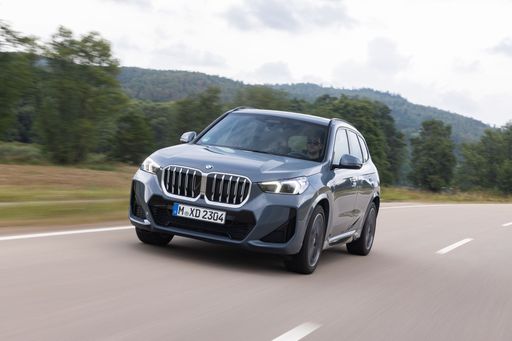 @ press.bmwgroup.com
@ press.bmwgroup.com
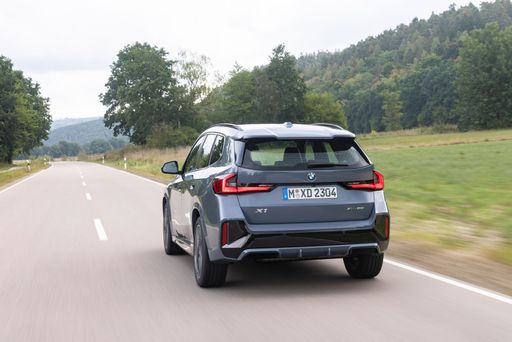 @ press.bmwgroup.com
@ press.bmwgroup.com
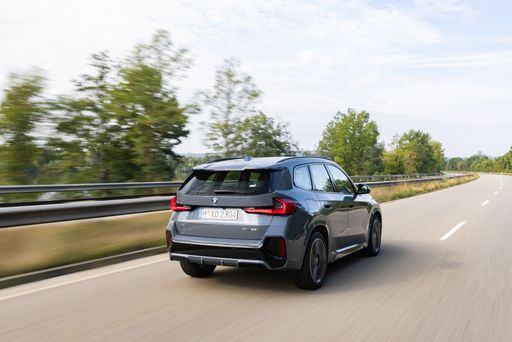 @ press.bmwgroup.com
@ press.bmwgroup.com
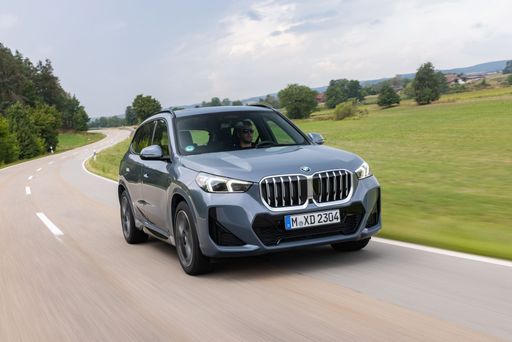 @ press.bmwgroup.com
@ press.bmwgroup.com
 @ press.bmwgroup.com
@ press.bmwgroup.com
Dacia Duster
The Dacia Duster represents a compelling choice for those seeking an affordable yet robust SUV in the market. With its rugged design and practicality, it tackles both urban commutes and off-road adventures with ease. Inside, the vehicle offers a spacious cabin that ensures comfort, while maintaining its reputation for delivering excellent value for money.
details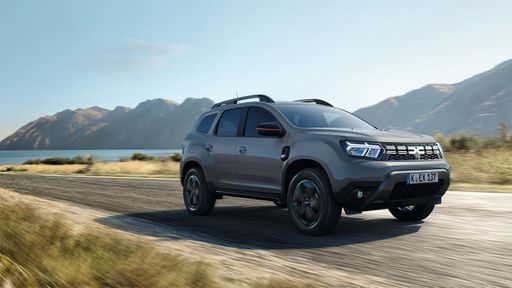 @ dacia-presse.de
@ dacia-presse.de
 @ dacia-presse.de
@ dacia-presse.de
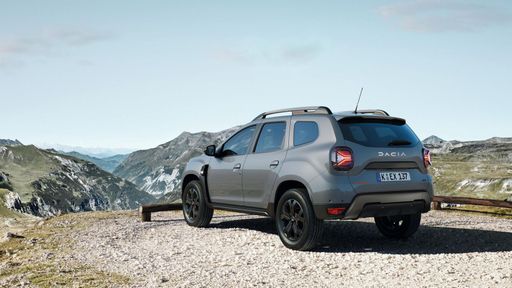 @ dacia-presse.de
@ dacia-presse.de
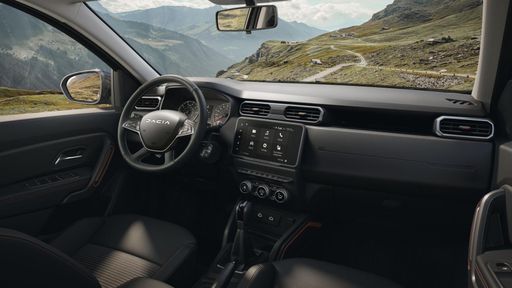 @ dacia-presse.de
@ dacia-presse.de

|

|
|
|
|
Costs and Consumption |
|
|---|---|
|
Price
38200 - 55500 £
|
Price
16300 - 24800 £
|
|
Consumption L/100km
0.8 - 7.7 L
|
Consumption L/100km
5 - 7.6 L
|
|
Consumption kWh/100km
-
|
Consumption kWh/100km
-
|
|
Electric Range
83 km
|
Electric Range
-
|
|
Battery Capacity
14.20 kWh
|
Battery Capacity
0.60 kWh
|
|
co2
17 - 175 g/km
|
co2
113 - 148 g/km
|
|
Fuel tank capacity
47 - 54 L
|
Fuel tank capacity
49 - 55 L
|
Dimensions and Body |
|
|---|---|
|
Body Type
SUV
|
Body Type
SUV
|
|
Seats
5
|
Seats
5
|
|
Doors
5
|
Doors
5
|
|
Curb weight
1575 - 1935 kg
|
Curb weight
1351 - 1465 kg
|
|
Trunk capacity
490 - 540 L
|
Trunk capacity
430 - 517 L
|
|
Length
4500 - 4505 mm
|
Length
4343 mm
|
|
Width
1845 mm
|
Width
1813 mm
|
|
Height
1622 - 1642 mm
|
Height
1656 - 1661 mm
|
|
Max trunk capacity
1495 - 1600 L
|
Max trunk capacity
1545 - 1609 L
|
|
Payload
490 - 500 kg
|
Payload
414 - 430 kg
|
Engine and Performance |
|
|---|---|
|
Engine Type
Diesel MHEV, Petrol MHEV, Plugin Hybrid, Petrol, Diesel
|
Engine Type
LPG, Full Hybrid, Petrol MHEV
|
|
Transmission
Automatic
|
Transmission
Manuel, Automatic
|
|
Transmission Detail
Dual-Clutch Automatic
|
Transmission Detail
Manual Gearbox, Automated Manual
|
|
Drive Type
Front-Wheel Drive, All-Wheel Drive
|
Drive Type
Front-Wheel Drive, All-Wheel Drive
|
|
Power HP
136 - 326 HP
|
Power HP
91 - 140 HP
|
|
Acceleration 0-100km/h
5.4 - 9.2 s
|
Acceleration 0-100km/h
9.9 - 14 s
|
|
Max Speed
190 - 250 km/h
|
Max Speed
160 - 180 km/h
|
|
Torque
230 - 477 Nm
|
Torque
160 - 230 Nm
|
|
Number of Cylinders
3 - 4
|
Number of Cylinders
3 - 4
|
|
Power kW
100 - 240 kW
|
Power kW
67 - 104 kW
|
|
Engine capacity
1499 - 1998 cm3
|
Engine capacity
999 - 1598 cm3
|
General |
|
|---|---|
|
Model Year
2023 - 2025
|
Model Year
2024 - 2025
|
|
CO2 Efficiency Class
D, E, B, F
|
CO2 Efficiency Class
D, C, E
|
|
Brand
BMW
|
Brand
Dacia
|
Is the BMW X1 offered with different drivetrains?
The BMW X1 is offered with Front-Wheel Drive or All-Wheel Drive.
The prices and data displayed are estimates based on German list prices and may vary by country. This information is not legally binding.
